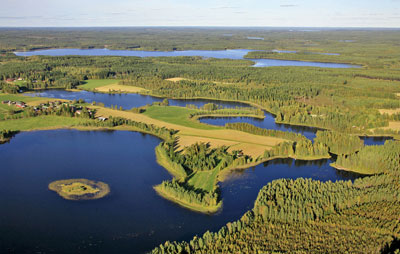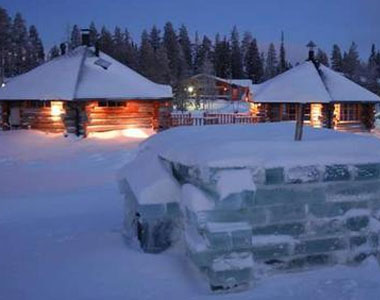Finland
Country statistics

Land area: 117,942 sq miles (305,470 sq km)
Total area: 130,558 sq miles (338,145 sq km)
Population (2010 est.): 5,255,068 (growth rate: 0.08%); birth rate: 10.3/1000; infant mortality rate: 3.4/1000; life expectancy: 79.1; density per sq km: 17
Capital City: Helsinki
Monetary unit: Euro (formerly markka)
Languages: Finnish 92%, Swedish 6% (both official); small Sami- (Lapp) and Russian-speaking minorities
Ethnicity/race: Finn 93.4%, Swede 5.7%, Sami (Lapp) 0.1%, Roma 0.2%, Estonian 0.2%
Religions: Evangelical Lutheran 84%, Greek Orthodox 1%, other Christian 1%, none 14%
Country introduction

Finland is in Northern Europe and has borders with Russia to the east, Norway to the north, and Sweden to the west.
It is one of the few countries whose land area is still growing. This is a result of the uplifting of the land mass and its consequent emerging from the sea that has been taking place since the end of the last ice age. The surface area is increasing by about 7 sq km (4.3 sq miles) per year.
Finland is covered with hundreds of thousands of lakes and dense forests. The south contains the least dramatic scenery, but the capital, Helsinki, compensates with its brilliant architecture and superb museum collections. Stretching from the Russian border in the east to the industrial city of Tampere, the water systems of the Lake Region provide a natural means of transport for the timber industry.
The main industries are wood, metals, engineering, telecommunications and electronics. Because of the climate, agriculture is limited to maintaining basic crops. Foreign trade is important, with exports accounting for nearly a third of GDP (Gross Domestic Product). Finland's most famous company is Nokia, the world's largest producer of mobile phones.
The culture

Finns have a word to describe themselves called "sisu", which translates to a combination of courage, strength and determination. They are typically quiet and reserved, but they will open up once they get to know someone.
Finnish people have adapted to their Nordic environment by developing a love for hot saunas and winter sports. They have also made use of the land around them by growing a few staple crops and combining those crops with fish, moose and even reindeer.
They are fond of technology, the Finns are leaders in internet usage and have more mobile phones than landline phones.
Attractions & landmarks

The architecture of Finland has a notable history spanning over 800 years and the architecture has contributed to several styles internationally, such as Nordic modernism, through the works of Alvar Aalto.
Most commonly, Finland's architectural achievements are related to modern architecture, mostly because the current building stock has less than 13% that date back to before 1920, which relates to the reconstruction following World War II.
Landscape and art of this northern land is somewhat restrained, but nevertheless Finland offers diverse and interesting landmarks. The most exciting among them are archaeological and architecture monuments.
Some of these landmarks include The fortress of Suomenlinna, which is one of the largest maritime fortresses in the world that sits upon a group of small islands and guards the approach to Helsinki Harbor. Construction of the fortress began in 1748 under the guidance of the king of Sweden, to whom Finland belonged at the time. It was transferred to civilian administration in 1973. Visitors reach Suomenlinna by ferry and can explore tunnels, fortifications and even a vintage Finnish submarine named Vesikko.
Other landmarks include the Old Rauma, a port on the Gulf of Botnia, which is one of the oldest harbors in Finland. The site is considered one of the finest preserved examples of 18th century architecture. Turku, Finland's former capital and once its most important city, boasts a 13th century castle, now repurposed as a Viking museum. Rovaniemi, above the Arctic Circle in Lapland, boasts a Santa Village theme park. It is also worth taking a journey on The King's Road, which begins in Bergen, Norway, and runs along the Southern Finnish coastline to the Russian border. The road itself is an old mail route connecting Helsinki with Oslo, Stockholm and St. Petersburg, stretching about 240 miles in total. Along the way visitors can see stone churches, iron mills, manor houses and many a quaint country village. Be sure to stop somewhere along the line and have a session in a local sauna.